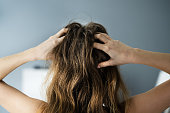Foul Smell From Mouth...
The main causes include dry mouth caused by certain foods, smoking, poor oral hygiene and a coated tongue. Treatment for halitosis depends on the cause.
What is halitosis?
Halitosis is an oral hygiene problem characterized by bad breath.
What causes bad breath?
Bad breath can have many causes, as bacteria have many sources. Halitosis can be caused by:
Certain foods. What you eat depends on your oral health, including your breath. Things like garlic and onions, or any food, go into the bloodstream. Until this food leaves your body, it can affect your breathing. Bad breath affects approximately 25 percent of people. There are many reasons that can cause bad breath, but most of them are due to poor oral hygiene.
- Brief Information About Bad Breath
- Here are some important points about bad breath.
- Bad breath affects an estimated 1 in 4 people worldwide.
- When food particles remain in the mouth, sulfur compounds are formed as a result of bacterial breakdown.
- Mouthwash can reduce bad breath.
Poor oral hygiene. Without regular brushing and flossing, and regular dental check-ups, food remains in the mouth. This is where bacteria multiply. Food that collects on the teeth, gums and tongue can cause cavities. This causes a bad smell and taste in the mouth.
Improper teeth cleaning. Poorly cleaned teeth can collect bacteria, fungi and food residues that cause irritation. bacteria cause bad breath. Certain bacteria on the back of the tongue can react with amino acids in food and produce sulfur compounds that smell good.
Period disease. One of the most important symptoms of gum disease is bad breath and bad taste in the mouth. This condition requires immediate medical attention.
Dry mouth (Xerostomia). This condition is often an important part of halitosis. When saliva production is severely reduced, the mouth cannot clean itself and remove debris and food particles. Dry mouth can be caused by certain medications, salivary glands, or constant breathing through the mouth instead of the nose.
Tobacco. Tobacco products, such as cigarettes, cigarettes, smokeless tobacco and tobacco, harm the teeth and put the body at risk for many diseases. But they also help the development of bad smell. Smokers are also at greater risk for:
Chronic Illness
Shortness of breath may be a symptom of one of these conditions. Contact your doctor:
Respiratory disease
Nose, trachea or lung disease
Chronic bronchitis


















